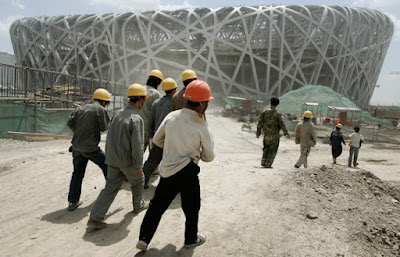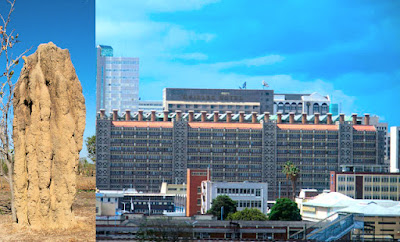Green Buildings - "We have a job ahead of us"
 Buildings are the single-most important source of greenhouse gas emissions in the world (United States: 43 percent of all CO2 emissions. It include energy to build, heat, cool, light, and power appliances.
Buildings are the single-most important source of greenhouse gas emissions in the world (United States: 43 percent of all CO2 emissions. It include energy to build, heat, cool, light, and power appliances."If we don't get a handle on the building sector, we just don't make it," says U.S. architect Ed Mazria speaking about ambitious long-term goals to cut greenhouse gases. Mazria, founder of the Architecture 2030 Challenge to promote solutions to reduce emissions, aims for a carbon-neutral building sector by 2030.
Sustainable building practices exist already. For exemple : the Swiss Re "Gherkin" building in London, the Reichstag (Parliament) in Berlin, Alberici Corporate Headquarters in St. Louis, or the stadium in Beijing for the 2008 Olympics that will showcase the latest in ecological building technology.It will incorporate solar power, rainwater collection and innovative ventilation
 systems.
systems.According to the U.S.-based Green Building Initiative, such buildings are energy-efficient, minimize pollution and reduce overall environmental impact. They require less maintenance, reduce shor
 t- and long-term costs, promote health among occupants and improve worker satisfaction. For example, the concept of the passive house that uses super-insulation to dispense with conventional heating systems.
t- and long-term costs, promote health among occupants and improve worker satisfaction. For example, the concept of the passive house that uses super-insulation to dispense with conventional heating systems.Photo Credits : Reuters(n°1, 3), John Guenther(n°2)


Comments